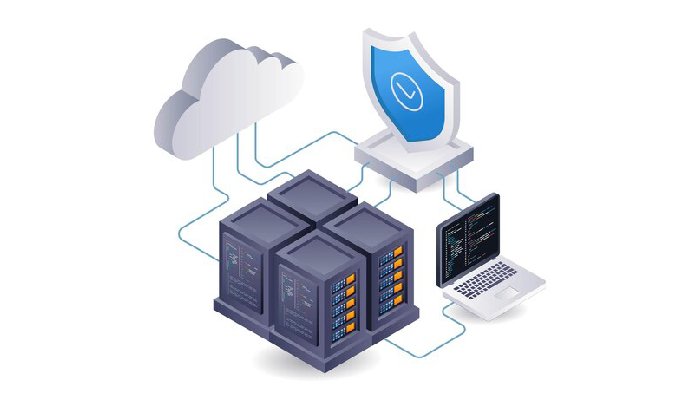As businesses increasingly rely on digital solutions, the future of Application Delivery Controllers (ADCs) is poised to become even more critical. With the rise of cloud-native applications, microservices architecture, and multi-cloud strategies, ADCs must evolve to meet the demands of these dynamic environments. The convergence of artificial intelligence and machine learning with ADC technology is expected to revolutionize how these controllers operate, allowing for real-time traffic analysis and automatic optimization of application delivery. This shift will enable organizations to enhance their operational agility, respond to changing market conditions, and deliver a superior user experience. Moreover, as cybersecurity threats become more sophisticated, the future of ADCs will likely see an increased focus on security features, including advanced threat detection and mitigation capabilities integrated directly into the application delivery process.
Choosing The Right Application Delivery Controller For Your Business Needs
Selecting the right Application Delivery Controller (ADC) for your organization is a crucial decision that can significantly impact your overall IT strategy. Given the diverse range of ADC solutions available, it is essential to carefully assess your specific business requirements and long-term goals. Key considerations should include the scalability of the solution, compatibility with existing infrastructure, and the specific features that align with your application delivery needs. For instance, organizations focusing on cloud migration may prioritize ADCs with robust multi-cloud capabilities and seamless integration with cloud service providers. Additionally, evaluating the performance metrics offered by different ADC solutions, such as latency reduction, throughput enhancement, and the ability to manage traffic spikes effectively, is paramount.

Application Delivery Controller: A Key Component Of Your Cloud Strategy
In the realm of cloud computing, the Application Delivery Controller (ADC) emerges as a vital component of a successful cloud strategy. As organizations increasingly migrate their applications to cloud environments, the need for effective application delivery mechanisms becomes paramount. An ADC enables businesses to manage and optimize application performance in the cloud, ensuring that users receive a seamless experience regardless of their location or the device they are using. By providing features such as load balancing, SSL offloading, and traffic management, ADCs enhance the efficiency of cloud-based applications while simultaneously improving security measures. Furthermore, with the growing trend towards hybrid and multi-cloud deployments, ADCs facilitate interoperability between various cloud services, enabling organizations to leverage the best features of each provider.
Exploring The Features And Capabilities Of An Application Delivery Controller
Application Delivery Controllers (ADCs) come equipped with a diverse array of features and capabilities designed to optimize application performance and enhance user experience. One of the fundamental functions of an ADC is load balancing, which distributes incoming application traffic across multiple servers to prevent any single server from becoming overwhelmed. This ensures high availability and reliability, particularly during peak usage times. Additionally, ADCs offer SSL offloading, a critical feature that enhances security by handling SSL encryption and decryption tasks, freeing up server resources for application processing. Traffic management capabilities allow ADCs to prioritize critical application traffic and redirect requests based on real-time conditions, improving response times and user satisfaction.
The Impact Of An Application Delivery Controller On User Experience
The Application Delivery Controller (ADC) plays a pivotal role in shaping user experience and satisfaction in today’s digital landscape. By optimizing application performance through features such as load balancing, traffic management, and caching, ADCs ensure that users have fast, reliable access to applications, which is crucial in an era where expectations for digital services are exceedingly high. Delays or interruptions can lead to user frustration and disengagement, making it essential for organizations to prioritize application performance. ADCs facilitate seamless access to applications across various devices and network conditions, enabling users to connect without hindrance. Moreover, ADCs contribute to enhancing security measures, which is increasingly vital as users become more aware of privacy and data protection issues.
Your Application Delivery Strategy With An Application Delivery Controller
To maximize your application delivery strategy, integrating an Application Delivery Controller (ADC) is essential. An ADC serves as a central hub for managing application traffic, ensuring optimal performance and reliability. By leveraging features such as intelligent load balancing, which dynamically distributes traffic based on real-time metrics, organizations can ensure that users experience minimal latency and downtime. Additionally, ADCs enable businesses to implement effective traffic management policies that prioritize critical applications, ensuring they remain accessible even during peak loads. Security is another crucial aspect where ADCs play a significant role. With built-in security measures like web application firewalls and DDoS protection, ADCs safeguard applications from various threats, thereby preserving the integrity of sensitive data.
The Role Of An Application Delivery Controller In Modern Networking
In the context of modern networking, the Application Delivery Controller (ADC) serves as a crucial facilitator of efficient and secure application delivery. With the proliferation of cloud services, remote work, and mobile applications, the networking landscape has become increasingly complex. ADCs address these challenges by providing a centralized solution for managing application traffic, ensuring that applications remain accessible and performant across various environments. By implementing advanced load-balancing techniques, ADCs distribute user requests intelligently across multiple servers, preventing bottlenecks and enhancing response times. Moreover, ADCs support multi-cloud and hybrid cloud strategies, enabling organizations to optimize their application delivery regardless of where the application is hosted.
How Does An Application Delivery Controller Enhance Application Performance?
The Application Delivery Controller (ADC) significantly enhances both application performance and security, making it a vital component in the IT ecosystem. One of the primary ways ADCs improve performance is through load balancing, which ensures that incoming application traffic is efficiently distributed across multiple servers. This prevents any single server from becoming overloaded, which can lead to slowdowns or outages. Additionally, ADCs optimize application delivery through caching mechanisms that store frequently accessed data, reducing the time it takes to retrieve information and thereby accelerating response times. Moreover, ADCs provide SSL offloading, freeing up server resources by handling encryption and decryption processes externally, which enhances overall application performance.
Conclusion
The significance of Application Delivery Controllers (ADCs) in the contemporary IT landscape cannot be overstated. As organizations navigate the complexities of digital transformation, cloud computing, and evolving user expectations, ADCs emerge as essential tools for optimizing application delivery, enhancing performance, and ensuring security. The future of ADCs is bright, with advancements in technology promising to revolutionize how applications are managed and delivered. By choosing the right ADC solution tailored to specific business needs, organizations can unlock new levels of efficiency, agility, and user satisfaction. The impact of ADCs on user experience is profound, as they enable seamless access to applications while addressing security concerns that are increasingly important in today’s digital age.
